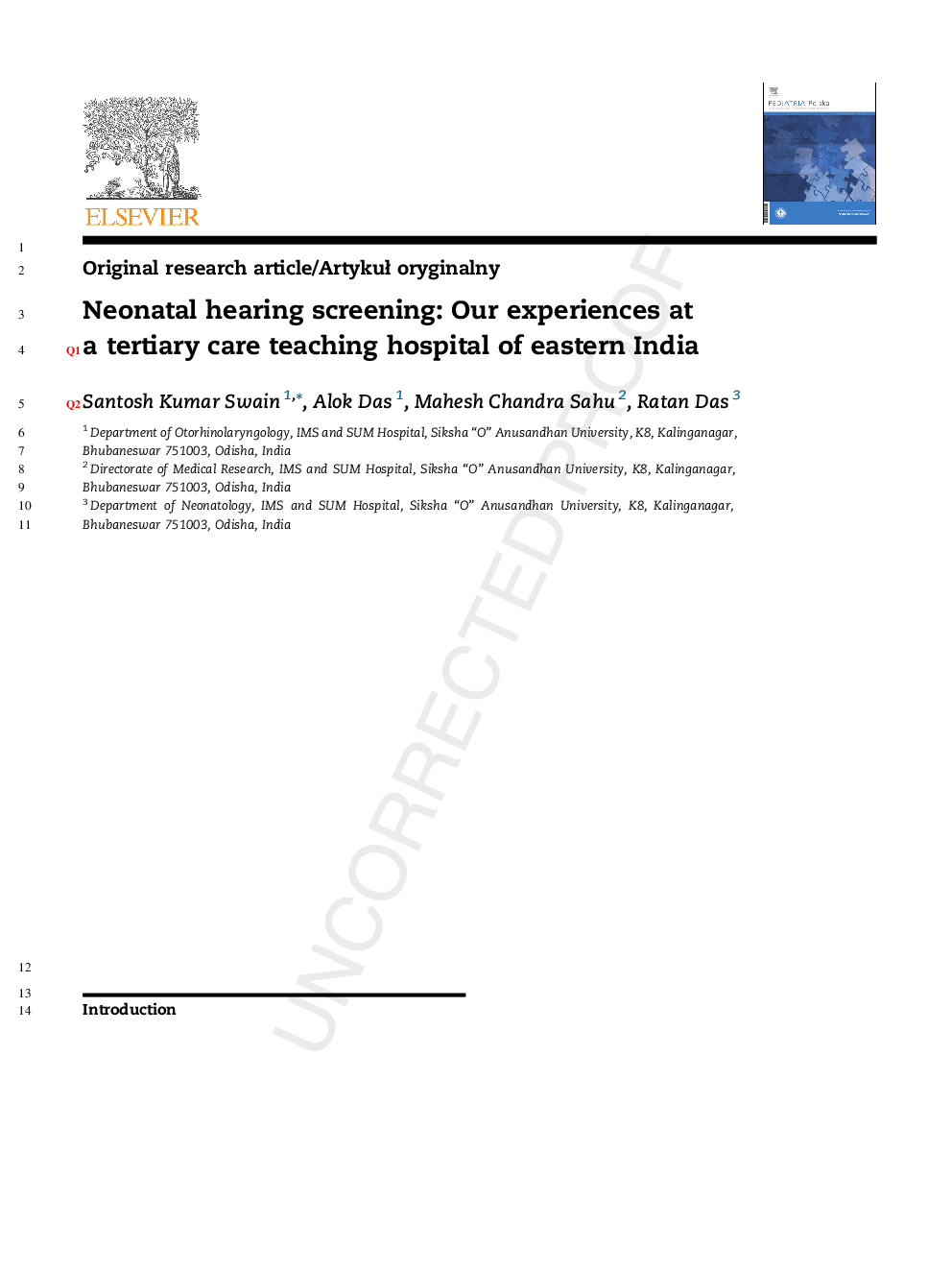| Article ID | Journal | Published Year | Pages | File Type |
|---|---|---|---|---|
| 8579199 | Pediatria Polska | 2017 | 5 Pages |
Abstract
Objective: To evaluate the incidence of hearing impairment among neonates and to provide intervention after detection of hearing impairment. Materials and method: It is a prospective observational non-randomized study conducted over a period of 2 years. Neonatal hearing screening was done at Department of Otorhinolaryngology via the detection and analysis of distortion product otoacoustic emissions from both ears. The otoacoustic machine model MAICO812 was used and the outcomes were analyzed. The statistical analysis was performed by using SPSS11. Result: A total of 410 neonates (224 males and 186 females) were screened for the presence of otoacoustic emission (OAE) in both ears. The neonates those showed pass was 98.29% (n = 403), failed 1.75% (n = 7). Out of first failed cases, 5 cases failed in second screening. Brainstem evoked response audiometry (BERA) tests were done for confirmation in 5 failed cases. BERA showed abnormal wave morphology in 3 cases, suggestive of bilateral profound sensorineural hearing loss. Conclusion: Neonatal hearing screening will change the scenario of congenital deafness identification and its management. These methods are efficient and cost-effective way to identify the deafness among neonates. The strict implementation of neonatal hearing screening in developing country like India will help to screen and decrease the drop out of the neonates in their first stage of hearing assessment in their life.
Related Topics
Health Sciences
Medicine and Dentistry
Dermatology
Authors
Santosh Kumar Swain, Alok Das, Mahesh Chandra Sahu, Ratan Das,
